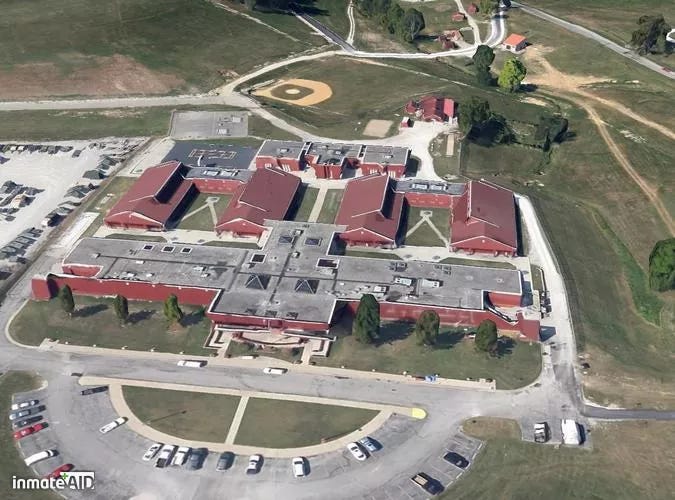When Hollywood came to Ashland, Kentucky
Remember Trumbo?
We’ve had some recent drama with a Chinese “spy balloon” this week. The only thing I’ll say about that is let’s not get so worked up about balloons that we forget about satellites.
That aside, the spy balloon kicked off an interesting conversation at my weekly Ladies’ Night In (LNI) group, reminding us about public places that try to stop you from taking photographs, including the exteriors of courthouses and city halls. Three of the nine women in my LNI group, myself included, had been stopped from taking such harmless tourist shots since the 9/11 terrorist attacks.
What’s this got to do with Ashland?
My encounter took place at the federal Ashland Satellite Prison Camp in Kentucky. Now before you think I have a fetish for taking prison photos, I should explain that I only wanted to see this particular one after learning about it in the 2015 movie, Trumbo (see below) because I have family in Ashland, a small city of about 21,000 on the Ohio River.
My great-aunt drove me to the prison and had the good sense to stay in the air-conditioned car while I was warned off by the security officer. I did a quick Google search for my rights and learned that someone had won a federal case for the right to take photos of federal buildings for non-commercial purposes. Instead of pressing my case with the security guard, we drove away slowly as I snapped a bunch of pictures from the passenger seat. (Read the federal case analysis here. I should note that this applies only to federal buildings).
Since my snapshots are on a thumb drive somewhere, here’s an official photo of the Ashland campus. Deemed one of the best places to go to prison in the United States (oh boy), it features a wellness program that includes stress reduction techniques. Two inmates per cell.
The Hollywood-Ashland Connection
The Hollywood connection to Ashland was Dalton Trumbo, a brilliant novelist and screenwriter. Trumbo was one of the"Hollywood 10," who were barred from working in the film industry after being accused of being members of the communist party. The Hollywood 10 found workarounds to being blacklisted, as dramatized in the movie starring Bryan Cranston in the title role.
Trumbo was convicted for contempt of Congress in 1950 and sent to Ashland, where he shared the exercise yard with ex-Congressman Andy May ( convicted of defense bribes). Trumbo embraced his conviction, saying: “As far as I was concerned, it was a completely just verdict. I had contempt for that Congress and have had contempt for several since.”
In the runup to the movie’s release Time Magazine ran a story about Trumbo, saying, “A look at Trumbo’s actual biography reveals that this is one of the cases where the truth of his life was crazier than anything made up by a screenwriter—even one as talented as him.”
His daughters, Nikola and Melissa, were consultants on the movie to keep it as close as possible to the truth as they knew it. In the film's press notes, Nikola said that being a communist in the '40s was totally different than what it means now. It "meant that you were pro-labor and anti-Jim Crow, and you fought for civil rights for African Americans," she said. "It had nothing to do with Russia and everything to do with how an already great country could improve itself."
Here’s a clip from Trumbo’s congressional hearing in 1947.
Before Trumbo made it to the pinnacle of Hollywood success he’d written a book that earned him one of the early National Book Awards, the Most Original Book of 1939. Johnny Got His Gun is an anti-war book and Trumbo himself adapted it for the screen in 1971.
I recently finished a terrific novel about the film industry set during WWII, Mercury Pictures Presents. Here’s an author interview.
Alrighty then, have you ever been prohibited from taking pictures of a public building? Did you ever meet Dalton Trumbo? Did you read Mercury Pictures Presents? Let’s hear all about it!


